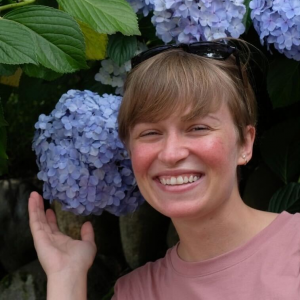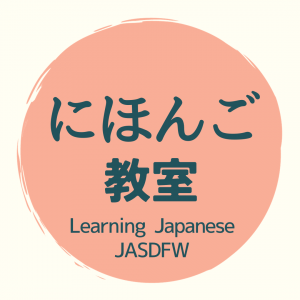Japanese Language Program (Online)
NEW: Fall 2024 Registrations are now open!
The Japanese Language Program at JASDFW offers beginning level Japanese classes to help learners build foundations of learning the Japanese language. The focus is on conversational Japanese and classes will cover familiar topics regularly encountered in daily life and friendly social situations. The goal is for learners to have a basic understanding of how the language is used in different social circumstances while learning some essential Japanese language structures and cultural values.
The program also offers several workshops throughout the year that focuses on specific themes (travel tips, tv shows, etc) or particular structure of the language (the use of です, particles, the writing characters, etc).
✨Join our Japanese Language Program Email list ✨
These Japanese classes will be conducted via Zoom. Attendees must have a device with audio and video capabilities, as well as an internet connection. The Japan-America Society of Dallas/Fort Worth reserves the right to cancel the class if it does not meet the minimum attendance number. Please contact us at ikuko@jasdfw.org if you have questions about the language classes.
Costs (8-session courses below)
workshops are separate price
Member: $160
Non-member: $210
Membership Bundle*: $190 (Save $15!)
*JASDFW regular individual/family membership + Tuition
Japanese Language Program Policy
|
|
Language Workshops (Online)
-
Kanji Fundamentals Register Here for Kanji Fundamentals
- Part 1: General Introduction: Wednesday, August 28th 7:30 – 8:30pm CST
- Part 2: Understanding Radicals: Wednesday, September 4th 7:30 – 8:30pm CST
- Part 3: Learning and Practicing Kanji : Wednesday, September 11th 7:30 – 8:30pm CST
- Instructor: Keiko Yokoyama
-
Japanese for Travelers Register Here for Japanese for Travelers
- Part 1: Preparing for Your Trip – Wednesday, Sept 4th 7:30 – 8:45pm (CST)
- Part 2: You’ve Arrived! – Wednesday, Sept 11th 7:30 – 8:45pm (CST)
- Part 3: Essential Travel Etiquette – Wednesday, Sept 18th 7:30 – 8:45pm (CST)
- Instructor: Ikuko Fujiwara
Japanese Fundamentals 1: Getting Started (Online)
-
Mondays 7:00pm – 8:00 pm CSTSeptember 9 – November 4 make-up 11/11 (No class 10/14) (8 sessions)Instructor: Izumi Sakurada
-
Tuesdays 7:00pm – 8:00 pm CSTAugust 27 – October 22 make-up 10/29 (No class 10/15) (8 sessions)Instructor: Mia Donovan
-
Thursdays 12:00pm – 1:00 pm CSTSeptember 26 – November 14 make-up 11/21 (8 sessions)Instructor: Mayuko Guidi
This course is for beginners who are looking for a general understanding of the Japanese language and to practice some common expressions used in personal conversations. The course will touch a little bit of everything of the good-to-know basics as learners begin their Japanese learning journey. Prior knowledge of Japanese characters (Hiragana, Katakana, & Kanji) is not required to take this course. Students will be able to:
- Appropriately demonstrate a variety of greetings and parting phrases.
- Demonstrate the use of a variety of basic and essential daily expressions such as yes/no, thank you/sorry, and excuse me.
- Practice introducing themselves appropriately.
- Practice sharing simple personal details such as where they live, likes/dislikes, and talents and skills.
- Examine basic sentence structures and create simple sentences about themselves.
- Examine the roles of particles in Japanese and become familiar with some basic particles.
- Recognize basic hiragana characters and distinguish them from other characters (katakana and kanji).
- Examine some practices, beliefs and attitudes that characterize Japanese culture.
Japanese Fundamentals 2: Sentence Structures (Online)
-
Tuesdays 7:30pm – 8:30 pm CSTSeptember 24 – November 12 make-up 11/19 (8 weeks course)Instructor: Keiko Yokoyama
This course is for beginning level learners who have little to some knowledge of basic Japanese. The course goes deeper into understanding the basic Japanese sentence structures, especially noun and adjective sentences, while also practicing some common expressions used in personal conversations related to family, pets, occupations, and desires. This course also introduces a variety of basic particles that are essential to creating simple sentences. The course is designed as a continuation of Fundamentals 1, but completing Fundamentals 1 is not required to join this course. Prior knowledge of Japanese characters (Hiragana, Katakana, & Kanji) is not required to take this course.
Through this course, students will be able to
- Appropriately demonstrate a variety of greetings and parting phrases.
- Demonstrate the use of a variety of basic and essential daily expressions.
- Practice sharing personal details such as occupation, family, talents and skills, etc.
- Review and demonstrate some basic particles (はwa, がga, をwo, もmo, とto, のno, にni, etc)
- Examine basic sentence structures, particularly noun and adjective sentences, and create original simple sentences.
- Examine counters and how they work.
- Practice how to ask basic questions (What, What kind, How many, etc.)
- Recognize Hiragana and understand how it is different from Katakana, and Kanji.
- Examine some practices, beliefs and attitudes that characterize Japanese culture.
Prior knowledge of Japanese characters (Hiragana, Katakana, & Kanji) is not required to take this course. While taking Japanese Class 1 is highly recommended before taking Japanese Class 2, it is not a requirement. However, students should have some basic understanding of the following:
- The function of desu (です) in a sentence.
- The role of particles in Japanese sentences, especially some basic understanding of ka (か)wa(は)wo(を)mo(も) to(と).
- How to ask a simple question: Korewa nandesuka? (これは なんですか。)
- Demonstrative Pronouns: Kore/Sore/Are(これ・それ・あれ)
- Plain form vs. Polite form
Japanese Fundamentals 3: Understanding Verbs (Online)
-
Wednesdays 7:30pm – 8:30 pm CSTSeptember 25 – November 13 make-up 11/20 (8 weeks course)Instructor: Keiko Yokoyama
This course is designed for beginning level to lower-intermediate learners who understands the hiragana system and have some basic understanding of the Japanese language. The course focuses on learning basic structures of verbs and verb sentences while also practicing common expressions useful to describe daily activities and future plans. The course will also introduce useful conjunctive particles and continue reviewing and practicing basic particles from previous classes. The course is designed as a continuation of Fundamentals 2, but completing Fundamentals 2 is not required to join this course. Prior knowledge of hiragana and katakana, however, is required. Students will be able to:
- Demonstrate familiar and basic expressions and phrases.
- Demonstrate a variety of greetings useful in daily conversations.
- Demonstrate sharing daily activities, future plans, and past events
- Examine 15 essential particles, conjunctive particles and the kara (から)particles
- Examine basic sentence structures, particularly verb sentences and create original simple sentences.
- Demonstrate asking questions about when, where, who, what and why (いつ、どこで、だれが、なにを、なぜ).
- Examine some practices, beliefs and attitudes that characterize Japanese culture.
While taking Japanese Class 2 is highly recommended before taking Japanese Class 3, it is not a requirement. However, students should have some basic understanding of the following:
- Hiragana Characters (Ideally also katakana)
- The function of desu (です) in a sentence.
- Noun and adjective sentence structures.
- Adjective structures (い adj vs. な adj and basic conjugation)
- Particles: ka (か)wa(は)ga(が)wo(を)mo(も) to(と),
- How to ask a simple question: Korewa nandesuka? (これは なんですか。)
- Demonstrative Pronouns: Kore/Sore/Are(これ・それ・あれ)Kono/Sono/Ano (この ・その・あの)
- Understanding of Plain form vs. Polite form
Join our Japanese Language Program group list to receive updates on future sessions
Japanese Language Program Policy
Language Programs Manager and Instructor
 Ikuko Fujiwara
Ikuko Fujiwara
ikuko@jasdfw.org
Her academic and professional background is in TESOL and Composition which began with earning a Master’s degree in TESOL from Indiana University of Pennsylvania. Her career has been devoted to instruction and supporting student success while promoting diversity and inclusion in educational spaces. She has experience teaching Japanese, ESOL, and college composition at various colleges in the United States. She is committed to creating inclusive and meaningful learning spaces where people engage in cross-cultural/intercultural understanding and learn to use language in empowering ways.
Additional Instructors
 Grace Chalker
Grace Chalker
Texas born and raised, Grace graduated from the University of North Texas with degrees in Linguistics and Japanese. She spent a year studying abroad at Ritsumeikan University in Kyoto where she fell in love with Japan’s history and culture. Upon graduating, Grace taught Japanese for over four years. She has assisted students with AP Japanese and JLPT test prep and led an 18-day study abroad trip in Japan in 2018. During the 2019-2021 school years, Grace worked as an Assistant Language Teacher (ALT) at junior high schools in Japan. She continued her Japanese studies and passed the JLPT N2 exam. She is excited to show students how fun learning a second language can be!
Keiko Yokoyama
Keiko’s 20+ years of professional experience include teaching a variety of subjects at a Japanese school, providing one-on-one English language support to Japanese students to succeed in their local school learning, and tutoring non-native Japanese students in the Japanese language. Her dedication and attentive support to each student represents the fulfillment of the mission of language education in an increasingly globalized world, while serving the community as a bridge for cross-cultural communication.
 Izumi Sakurada
Izumi Sakurada
Originally from Nara, Japan, Izumi has lived in the United States for over 40 years. Also an educator at Gateway to Japan, she is an experienced instructor, providing language and cultural education in Japan via online workshops since 2006. She is passionate about bridging the gap between Japanese and other cultures, and her mission is to create an enjoyable and meaningful learning experience to promote a deeper understanding of Japan and Japanese culture for students of all ages and backgrounds.
 Mia Donovan
Mia Donovan
Mia, a Tokyo native, has been teaching Japanese for 12 years, catering to diverse age groups and proficiency levels. Recently earning a Master of Arts in Foreign Language Teaching from Michigan State University, she refined her teaching skills and deepened her understanding of language pedagogy. Mia’s passion lies in providing immersive cultural experiences for her students through authentic materials and real-life contexts integrated into her lessons.




